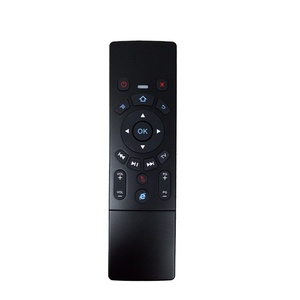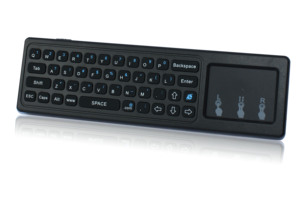(4730 products available)




































































































































































































An infrared (IR) remote control can be divided into several broad types based on function and application. They include the following;
Simplified Remote Controls
These are remotes manufactured for limited use to control basic functions on a few appliances. Often, the design process aims for ease of use and accessibility. This group of remote controls encompasses numerous products, chief among them being the Universal TV Remote Control. Its design synthesizes compatibility with many TV brands and manufacturers. This remote replaces the original that may have been lost or defective. Therefore, its buttons correspond with those usually found on a standard remote control. The result is an uncomplicated transition requiring little adjustment on the user's part. Other examples of simplified remotes are the TV Remote Control with only crucial buttons like power, volume, and channel, and the VCR/DVD Remote Control, designed solely for play, pause, rewind, fast forward, and stop functions.
Full-Feature Remote Controls
This class of remote control boasts a wide array of buttons offering numerous features and functions. Among its products is the Universal Remote Control, an all-encompassing solution for multiple home entertainment devices. Its programmable manual or learning function enables it to adopt the specific button functions of different device manufacturers. Thus, personalization becomes feasible according to individual preferences. Smart Remote Controls are sophisticated devices that can integrate with smart home systems. They provide seamless management of interconnected smart devices through a single remote. Voice-activated remote controls are another progressive addition to this category. They enable users to issue commands or requests that control the device directly. Features like channel surfing, playback control, and menu navigation are thus at the user's fingertips by merely speaking into the remote. In this regard, advanced technology like natural language processing and machine learning algorithms are employed to understand and execute user commands.
Replacement Remote Controls
Replacement remotes serve a critical function by substituting lost, damaged, or malfunctioning original remotes. Their design often emphasizes compatibility with a specific brand and model of remote control. They also incorporate the same buttons and features as the original remote to facilitate smooth operation. Examples of replacement remotes include TV Replacement Remote Controls, which restore full control over the TV set, and Replacement Remote Controls for Audio Devices like CD players, cassette decks, and amplifiers. These are intended to replace the lost or broken original remote controls that would otherwise hinder the user's ability to access all functions. Simple design and easy plug-and-play installation are common features in replacement remotes. These make them accessible to users who require a straightforward solution to restore control over their devices without the need for complex programming or integration processes.
Replacement remotes
Replacement remotes serve a critical function by substituting lost, damaged, or malfunctioning original remotes. Their design often emphasizes compatibility with a specific brand and model of remote control. They also incorporate the same buttons and features as the original remote to facilitate smooth operation. Examples of replacement remotes include TV Replacement Remote Controls, which restore full control over the TV set, and Replacement Remote Controls for Audio Devices like CD players, cassette decks, and amplifiers. These are intended to replace the lost or broken original remote controls that would otherwise hinder the user's ability to access all functions. Simple design and easy plug-and-play installation are common features in replacement remotes. These make them accessible to users who require a straightforward solution to restore control over their devices without the need for complex programming or integration processes.
Infrared (IR) remote controls are simple devices that have basic features and functions that allow the user to control items like TVs, sound systems, and other home devices from a distance. This technology is widely used, and an influential piece of consumer electronics that have the following components.
A remote control receiver for IR apps has a variety of applications in both residential and commercial settings, serving to elevate user convenience and flexibility. Here are some of the major applications of the device;
Bulk buyers of infrared controllers must take many factors into account before placing orders. They need to think about the potential users and their settings. Then, they need to make sure the remote controls are compatible with the devices in each setting. Also, they should buy remotes with features that suit the users' needs. More importantly, they should look for manufacturers that offer nice aftermarket support.
Q1: How does the IR remote control work?
A1: The ir remote control works by sending pulses of infrared light through a transmitter. These light pulses represent digital data and are received by a device with an infrared receiver. This data is decoded into commands, allowing remote operation.
Q2: What are the benefits of using IR remote controls?
A2: Infrared remote controls are affordable, use little power, and have a long battery life. They function reliably in good weather and can be operated with only one finger. Their low cost makes them ideal for frequent replacement, and quick signal transmission reduces time delays between button presses and action.
Q3: Can someone else in the house interfere with the controls?
A3: An IR remote control allows only the user to control devices in their home through coded signals. However, other remotes for the same device may interfere if within range, as uncontrolled IR signals can interrupt operation. The remote must be pointed at the device within a 30-foot range and can be blocked by walls or furniture.